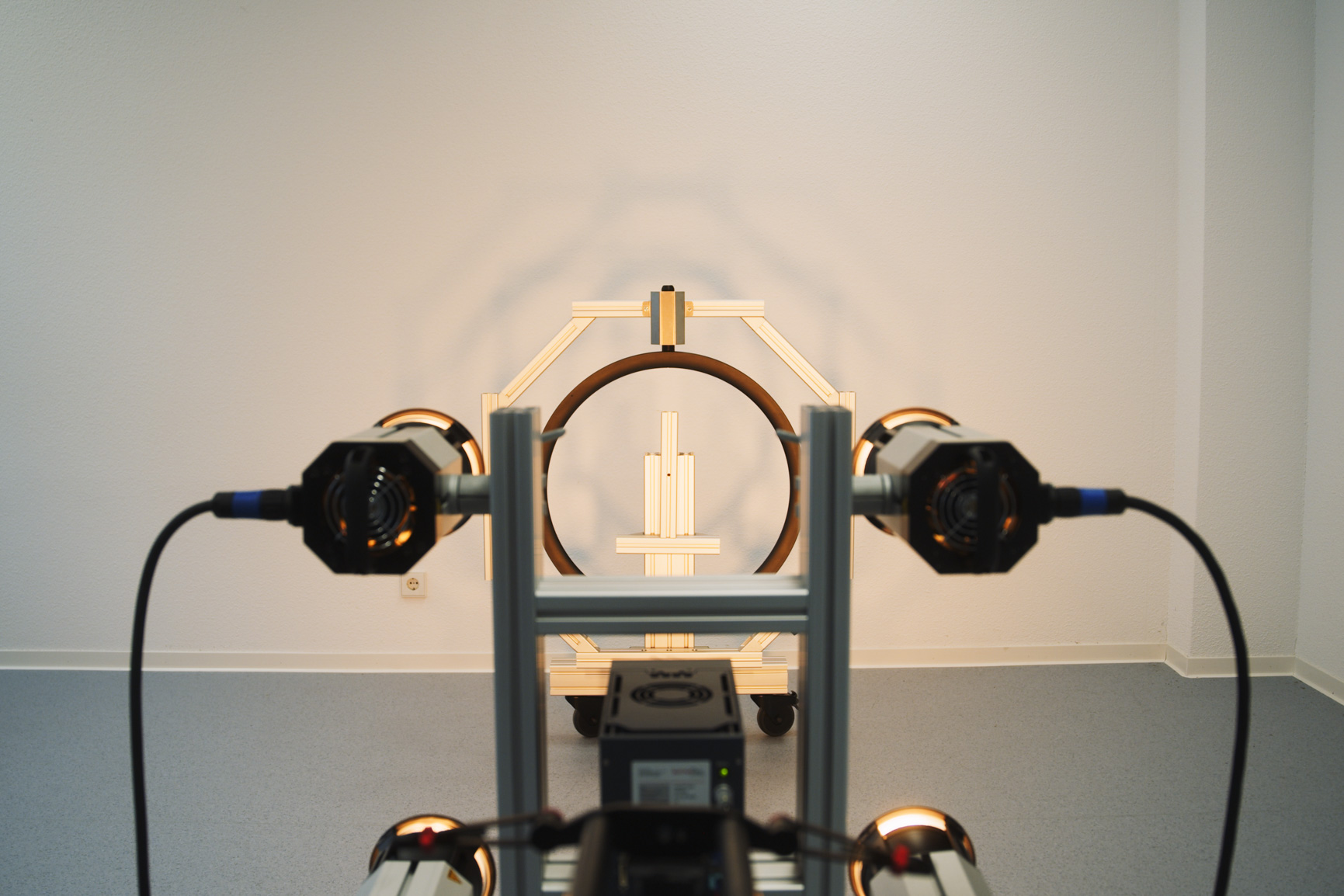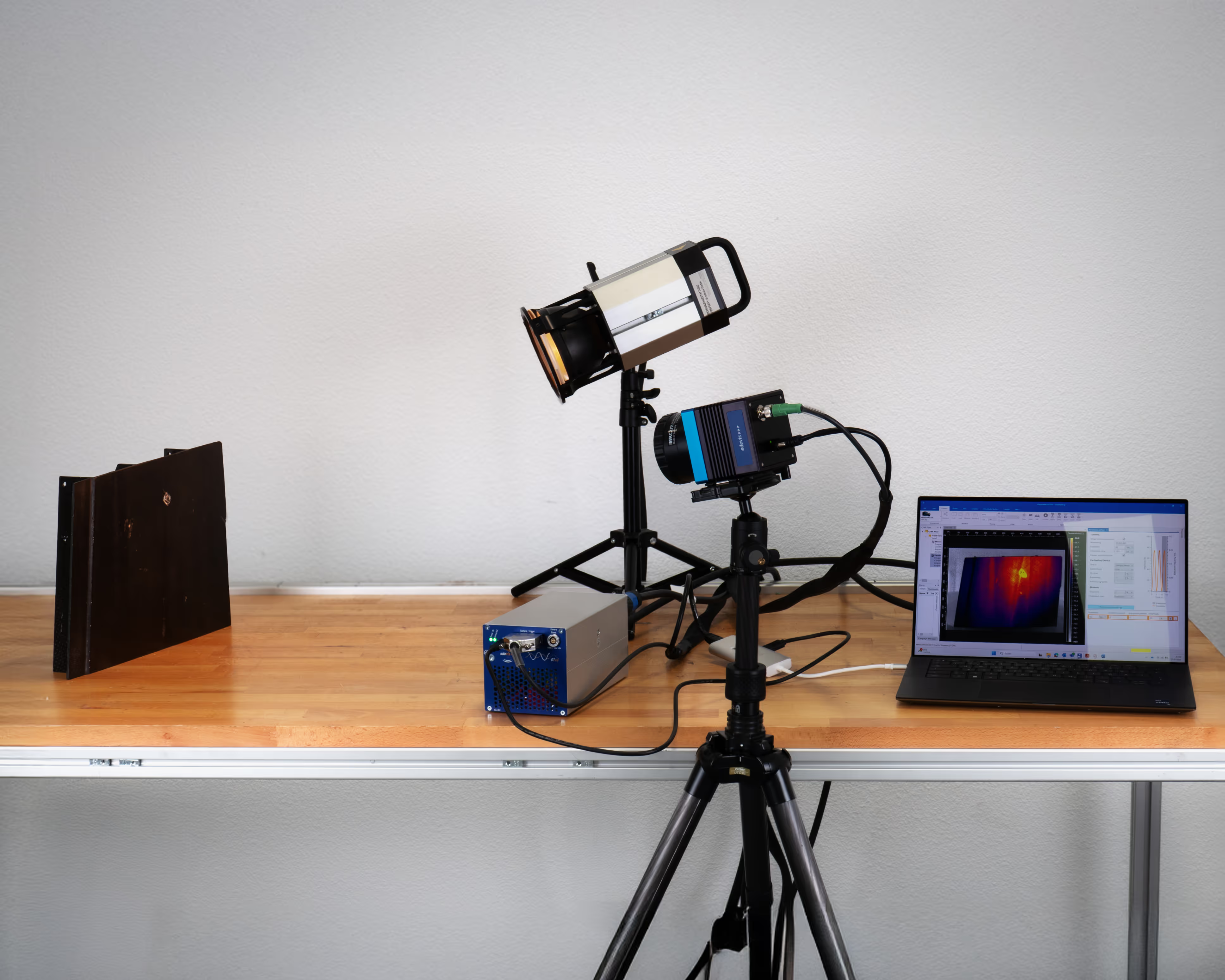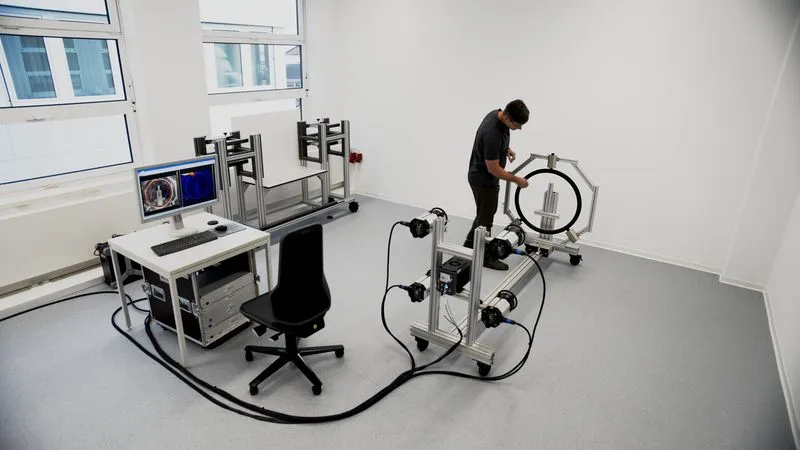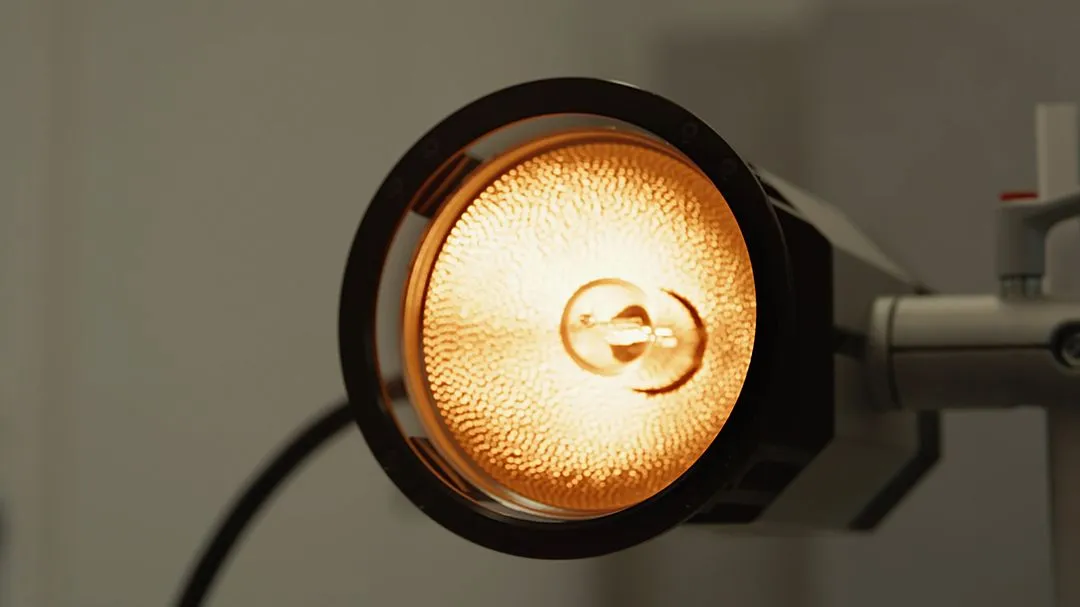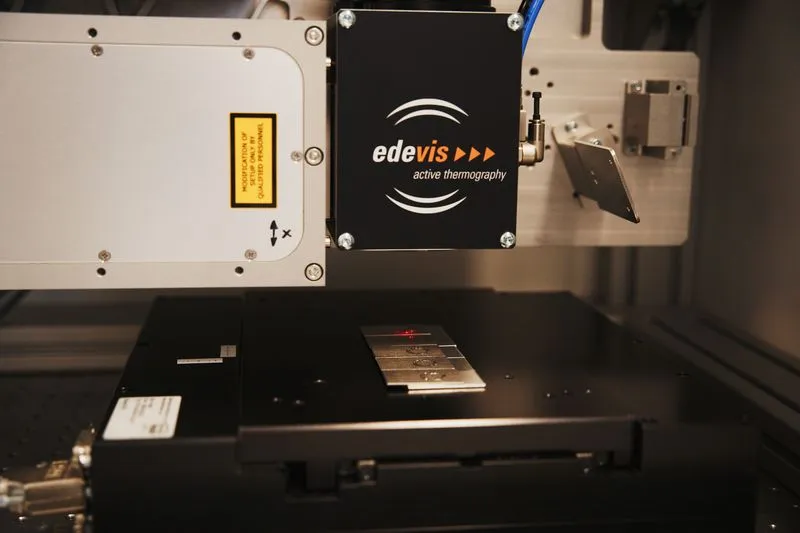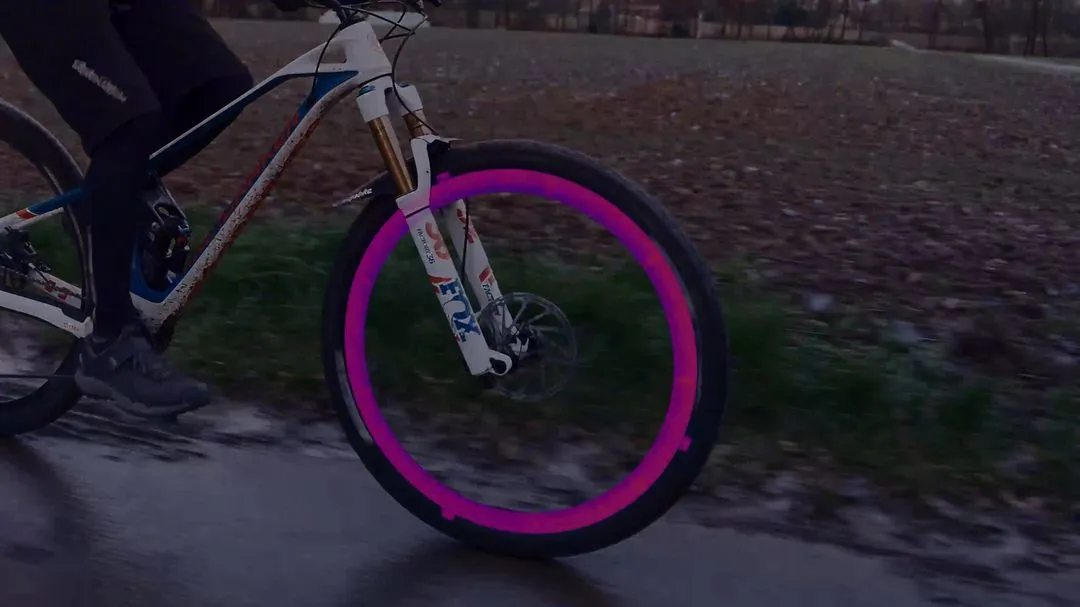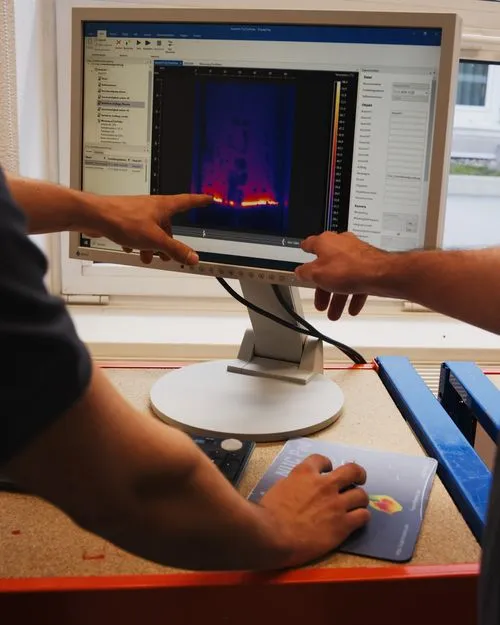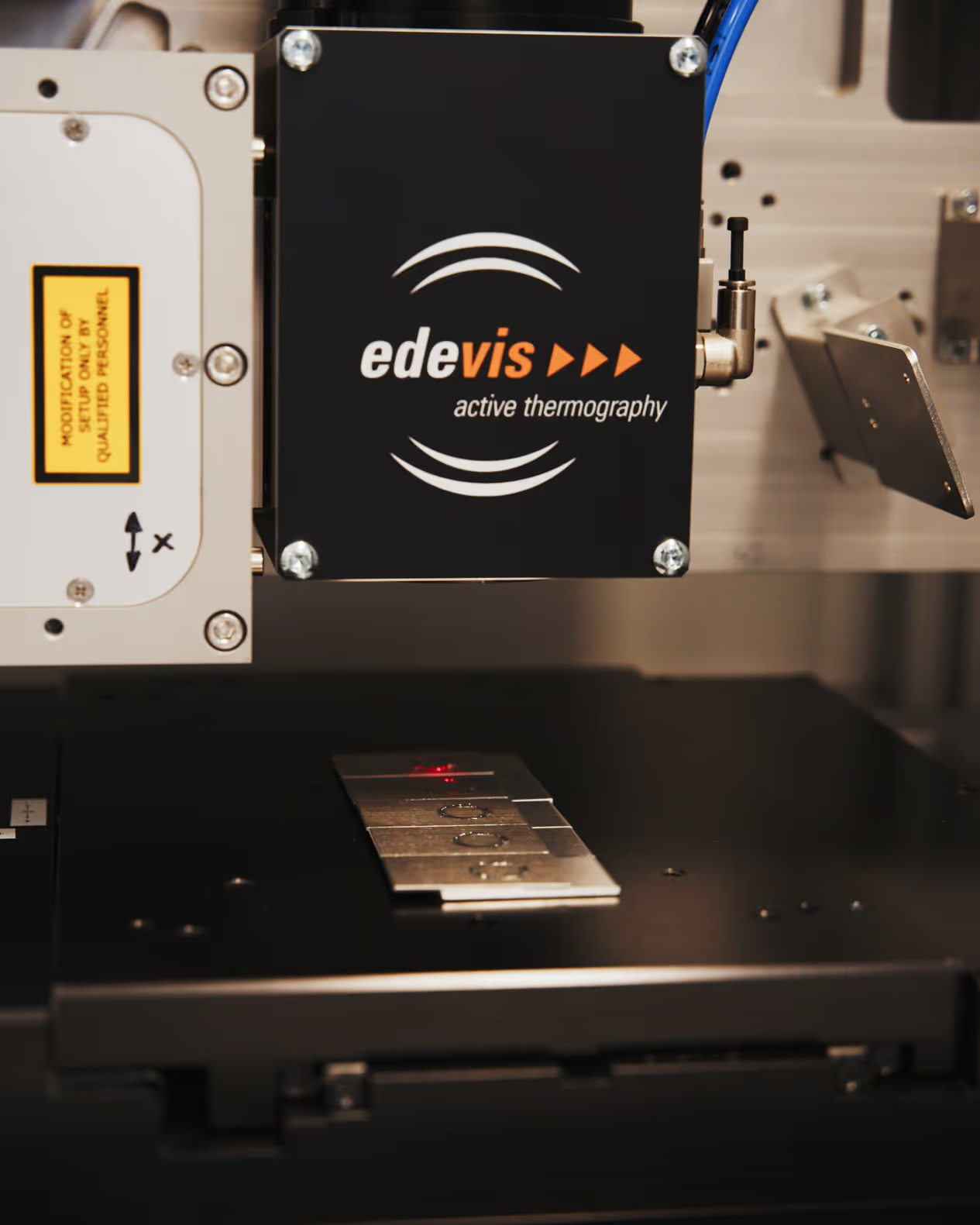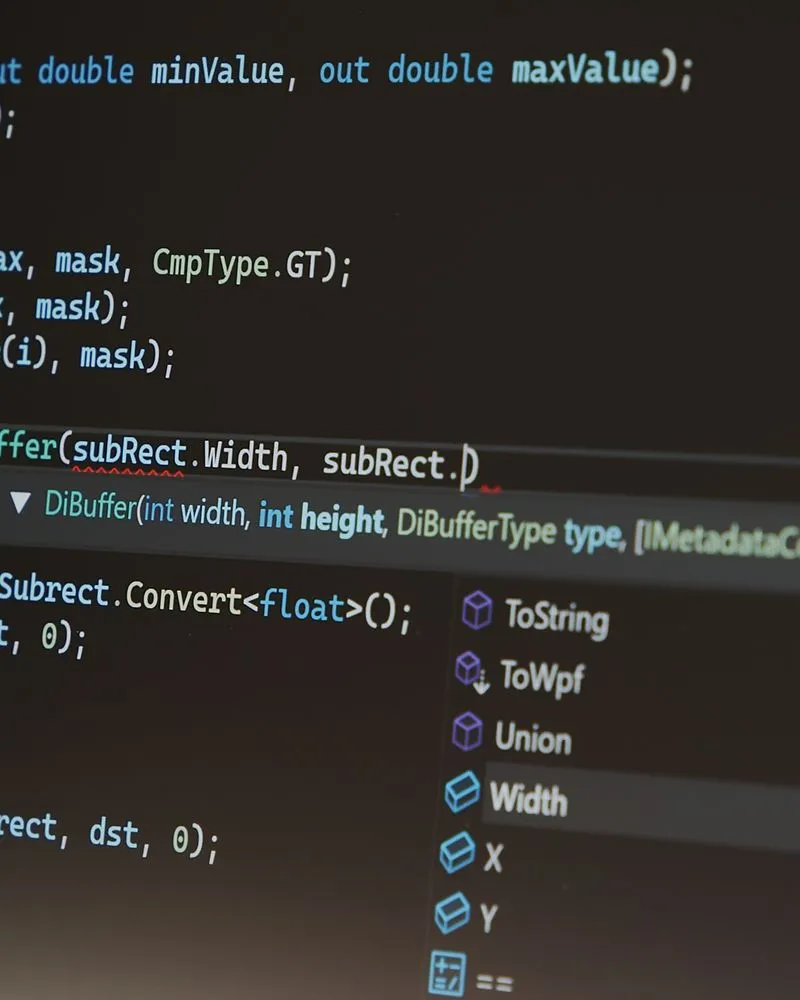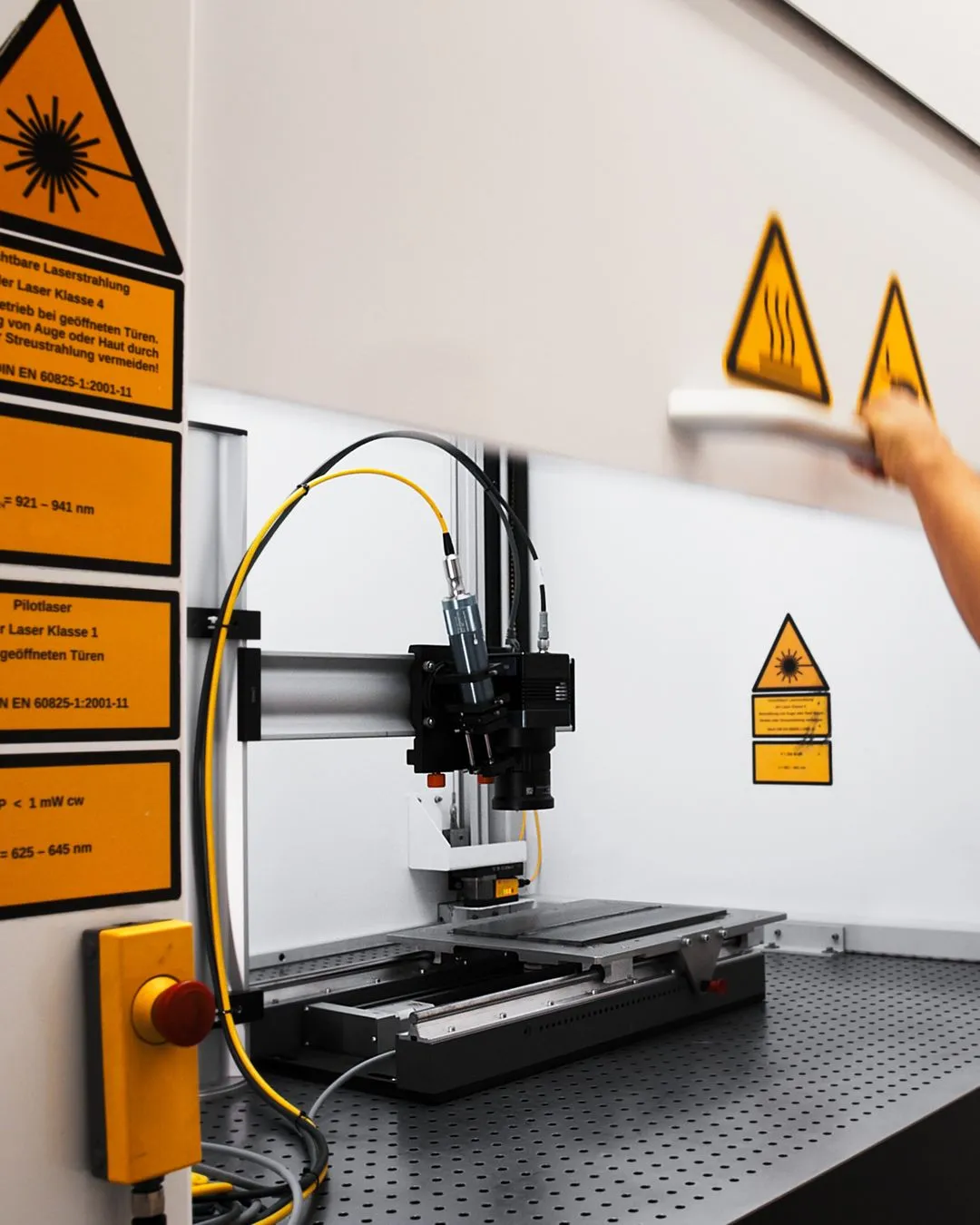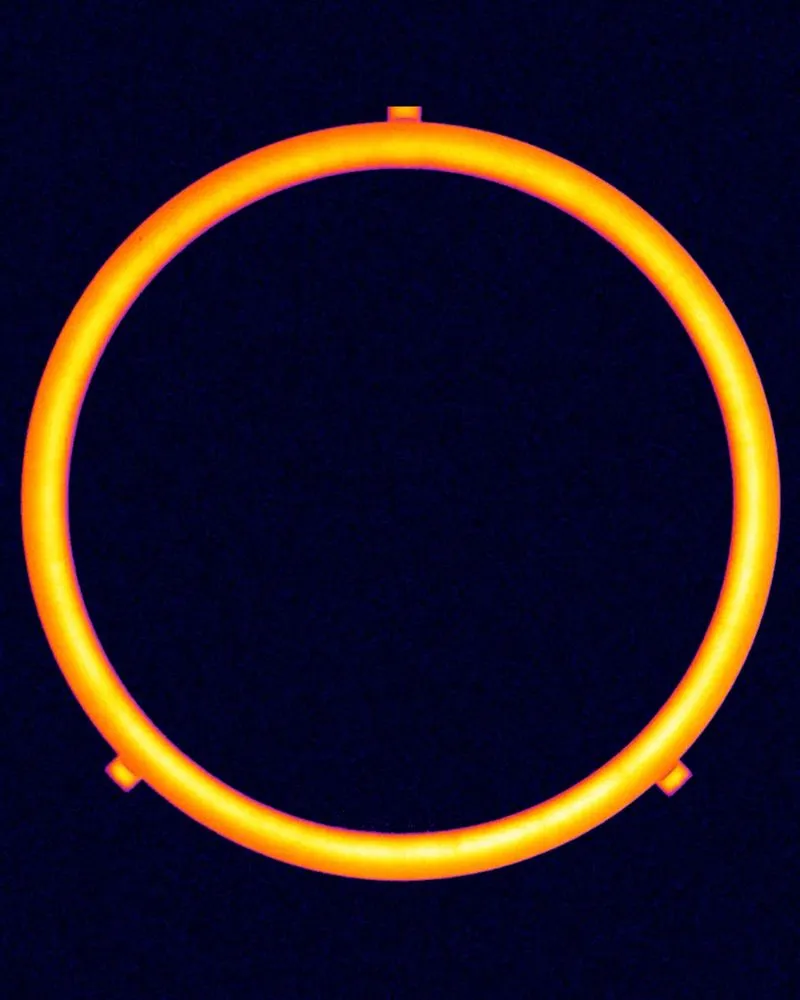OTvis
Accurate Non-Destructive Testing with Lock-in Thermography
OTvis systems are based on optically excited lock-in thermography —a highly sensitive method for non-contact detection of subsurface defects. Perfectly suited for quality assurance, research, and industrial serial testing.
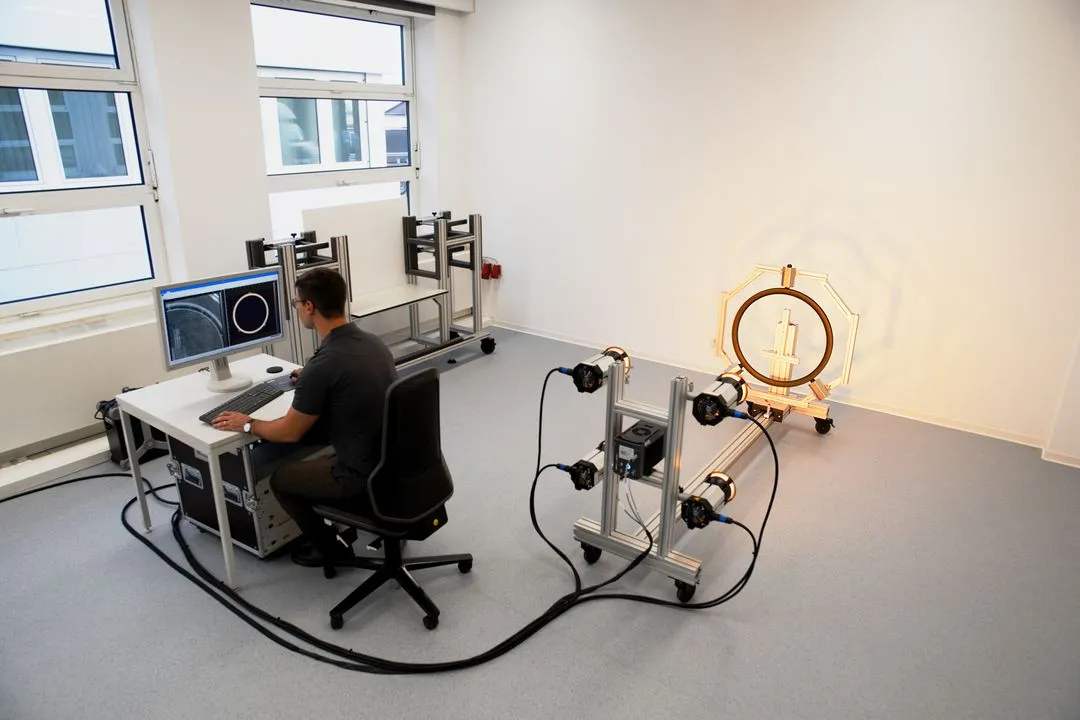
Applications
- CFRP Inspection
- Glue inspection
- Leather (inclusions, folds, repair areas)
- Corrosion Testing
- Wall Thickness Measurement
- Plastic Weld Joint Inspection
- Wind turbine rotor blade inspection
Advantages of OTvis
- Non-contact and non-destructive
- Depth-resolved flaw detection and wall thickness determination
- Suitable for testing large areas
- Precise and repeatable
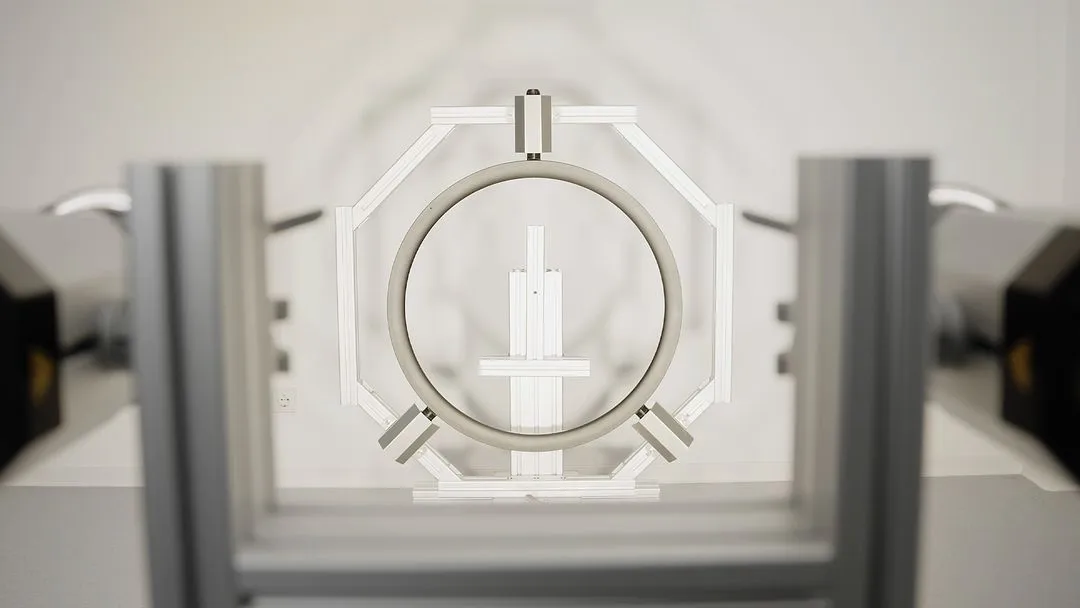
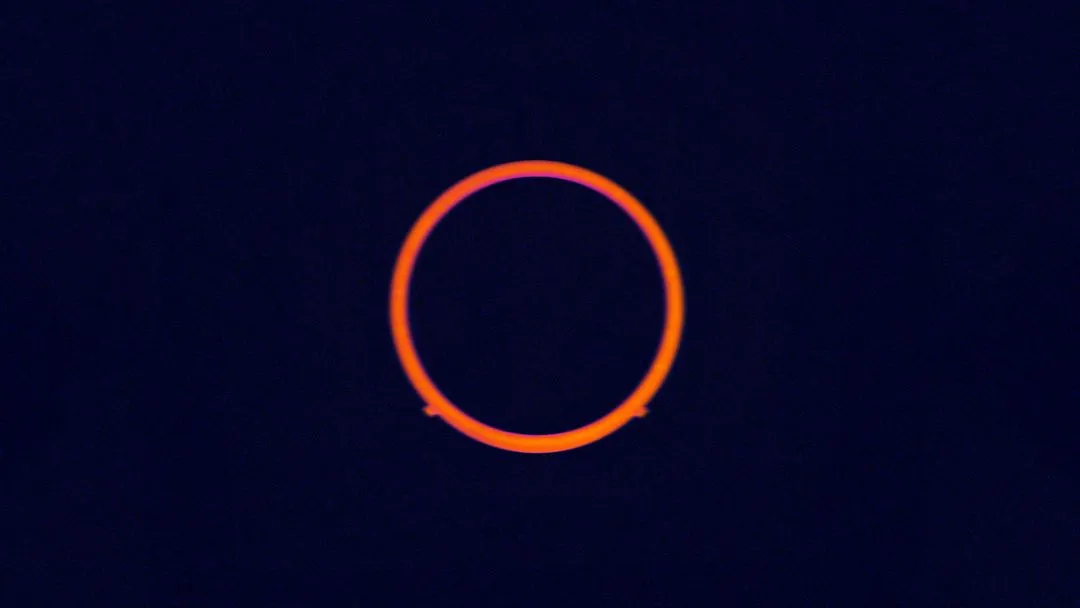
How does inpsection with OTvis work?
This method is especially suitable for inspecting large surfaces and complex geometries fast, highly sensitive, and depth-resolved.
Typical OTvis Testing Workflow
1. Excitation
2. Heat Propagation
3. Infrared Imaging
4. Signal Processing
Modular System
- OTvis lamp controller
- Halogen lamps with tripods
- Software module for device control
Additionally required:
- IR camera with MWIR or LWIR detector
- ESG signal generator (except for OTvis 3600 with integrated signal generator)
- edevis DisplayImg software
- Test bench/handling system (optional, for automated tests)
The system can be used for both laboratory tests and automated inline setups.

Evaluation software:
DisplayImg Elements
- Introduction in Active & passive thermography
- Easy data recording & analysis
- Basis image processing tools
DisplayImg Professional
- Laser unit & camera control
- Phase image analysis & Fourier evaluation
- Project management, API connection
- Compatible with all edevis excitation types
Our OTvis Systems
FAQ
Our frequently asked questions — answered quickly and easily.
Can OTvis be integrated into automated production lines?
Yes – OTvis is fully inline capable. It can be integrated into robot cells, inspection stations or flow production lines. Triggering, image acquisition, evaluation and result handover are automatic and reproducible – ideal for series production or 100% inspections.
find out moreFor which materials and components is OTvis particularly suitable?
OTvis is ideal for fibre composite materials such as CFRP or GFRP, for adhesive joints, weld seams and textured surfaces. Large, complex areas – for example aerospace components, rotor blades or vehicle components – can also be inspected efficiently and without contact.
find out moreHow deep can OTvis 'look' into the material?
The achievable inspection depth depends on the material, thermal conductivity and excitation frequency. In practice, defects in the range of a few millimetres deep can be reliably detected – even under top layers or coatings.
find out moreWhat distinguishes OTvis from the other edevis systems?
OTvis is based on lock-in thermography with continuous light modulation. In comparison: PTvis uses short flash pulses for rapid surface analysis, UTvis works with ultrasound for crack testing, LTvis with laser for precise point tests and ITvis with induction for metallic workpieces. OTvis is particularly suitable when large-area, depth-sensitive inspections are required.
find out moreWhat is the advantage of lock-in thermography over classical thermography?
Lock-in thermography uses a modulated, periodic thermal excitation – in contrast to the one-time heating in conventional thermography. The subsequent phase-based evaluation makes even weak signals from deep-seated defects clearly visible – and disturbances such as uneven heating or surface condition are largely suppressed.
find out more




